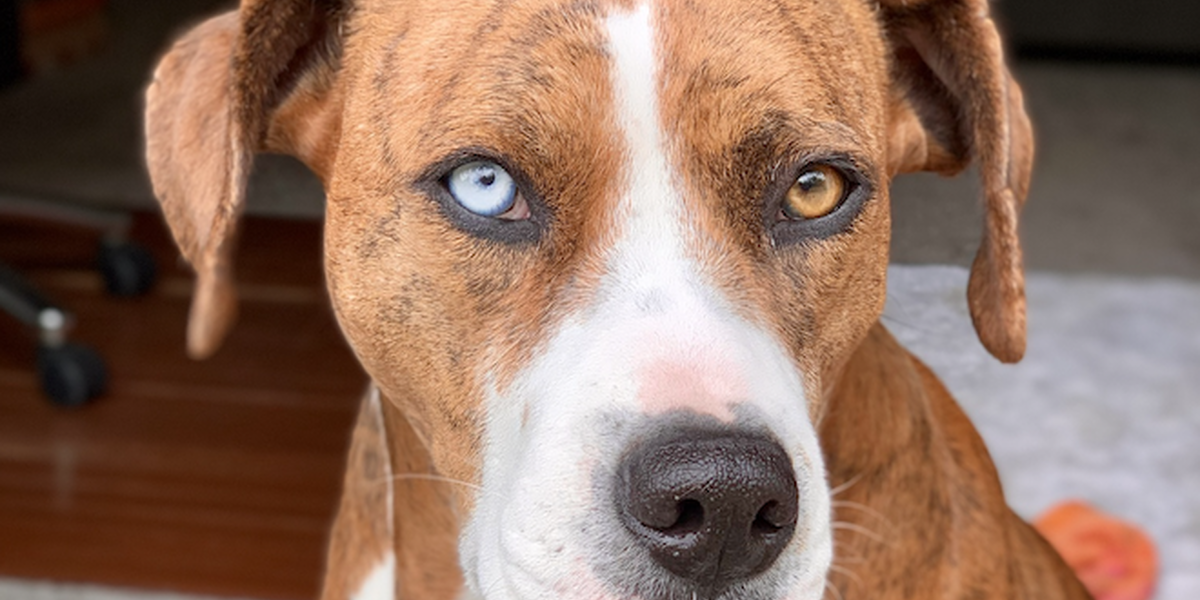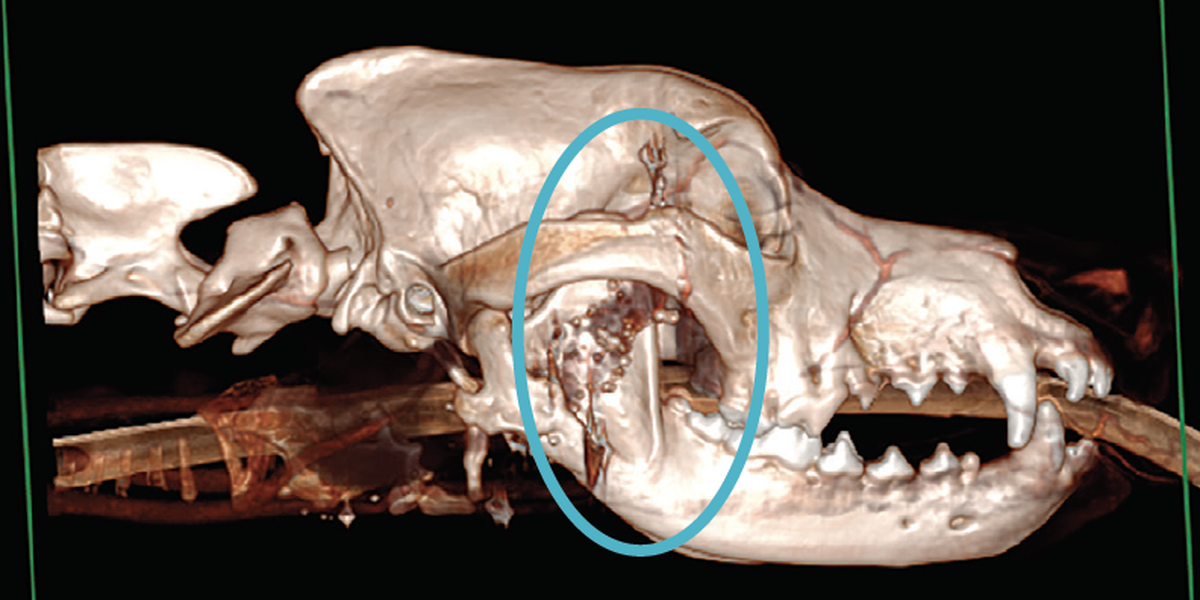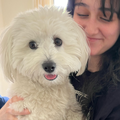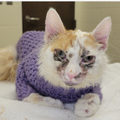Lilith’s short life has already been eventful. The 3-year-old pit bull mix was rescued from a shelter and fostered out to Trudy Kirk’s daughter, Kylee, an active-duty corporal stationed in Colorado Springs. Then, Kylee was transferred to South Korea earlier this spring, so Kirk took Lilith home to Savage, Minn. When Lilith struggled to cohabitate with her cats, Kirk partnered with her best friend, Krista Anderson, to care for Lilith. Now, Lilith has two loving homes.
Despite Lilith’s mild manners, Kirk and Anderson suspected a turbulent past. Lilith struggled to open her mouth enough to pant and winced whenever she yawned. Worried a previous injury had healed incorrectly, the duo brought Lilith to the University of Minnesota College of Veterinary Medicine’s (CVM) Veterinary Medical Center (VMC). Stephanie Goldschmidt, BVM&S, DAVDC, assistant professor in the Department of Veterinary Clinical Sciences, and the VMC’s Dentistry and Oral Surgery Service team assessed Lilith. A CT scan revealed shattered bone and bullet fragments buried in her face. To pinpoint Lilith’s exact injury, Goldschmidt reached out to the U’s Earl E. Bakken Medical Devices Center to create a 3-D print of Lilith’s skull. Goldschmidt then collaborated with the VMC’s radiology service to remove the infected bone and muscle around the wound.
All three of Lilith’s moms are elated with her postoperative transformation. Goldschmidt says Lilith’s success was made possible by the VMC’s advanced imaging abilities, which helped determine the most appropriate surgery. “On physical examination, we would have never suspected a gunshot wound.”
“She has beat death twice now,” says Kirk. “This sassy, beautiful, intelligent dog has just blossomed.”
“We are so lucky to have the VMC right in our backyard,” Anderson says, “and to actually get a real diagnosis, intervention, and phenomenal outcome—we could not have asked for better.”





